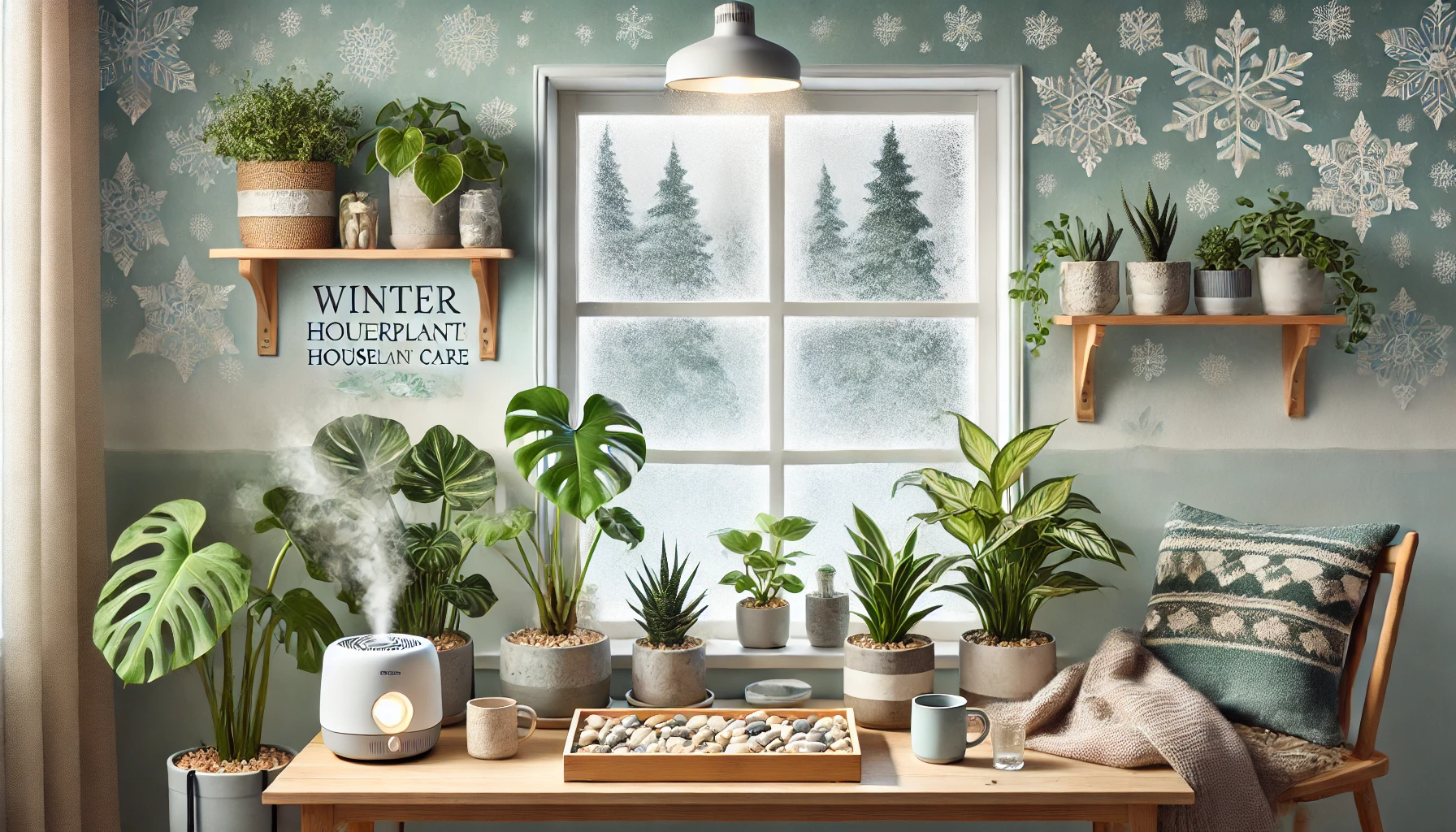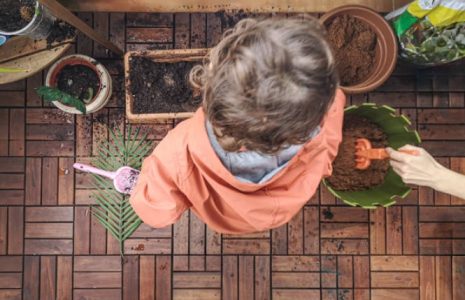No products in the cart.: $0.00
As the winter season sets in, temperatures drop, daylight hours shrink, and the sun’s intensity decreases. These changes can challenge your houseplants, causing them to slow their growth—or in some cases, struggle to survive. But don’t panic! With a few simple adjustments, you can create an environment where your plants stay healthy and happy through the colder months. Even if you can’t perfectly mimic their ideal growing conditions, you can provide enough support to keep them thriving.

🌞 Light: Boosting Winter Sunlight for Your Plants
In summer, long sunny days create perfect conditions for houseplants. However, winter is a different story. For example, in cities like Toronto, daylight drops from 16 hours in June to just 8 hours in December. To help your plants cope, here are a few tips to maximize their light exposure indoors:
- Move Plants Closer to Windows: Ensure your windows are draft-free to protect plants from cold air. Use weather-stripping to seal any gaps if needed.
- Keep Windows Clean: Dirt and grime on windows block sunlight. A quick cleaning ensures your plants receive as much light as possible.
- Dust Off Your Plants: Dusty leaves can block sunlight. Gently wipe them with a damp cloth to maximize light absorption.
- Try Grow Lights: If your home lacks natural light, grow lights can supplement or extend daylight hours. Options like full-spectrum bulbs or hanging grow lights are excellent for areas with limited sun.
💡 Pro Tip: Use grow lights to simulate summer days by extending light exposure to 12–16 hours. Turn them on in the morning or in the late afternoon on cloudy days.
💧 Humidity: Helping Your Plants Beat Dry Winter Air
Many houseplants originate from tropical climates, where high humidity is the norm. Winter’s dry indoor air can stress these plants, but you can boost humidity with these strategies:
- Use a Humidifier: A humidifier near your plants can provide consistent moisture in the air. Look for one with adjustable mist settings for the best results.
- Group Plants Together: Grouping plants increases localized humidity as they release moisture into the air.
- Pebble Tray Hack: Place your plant pots on trays filled with pebbles and water. As the water evaporates, it adds humidity around the plants.
- Avoid Misting Leaves: While misting may seem helpful, it’s not very effective and can lead to mildew. Instead, focus on methods that create constant moisture, such as humidifiers or enclosed greenhouses.
🌱 Extra Tip: Small indoor greenhouses are an excellent way to trap humidity. Whether you opt for a high-end greenhouse or a simple plastic one from a garden center, your plants will love the extra moisture.

🚿 Watering: Less is More in Winter
Winter slows plant growth, so overwatering becomes a common mistake. Since plants don’t dry out as quickly during colder months, follow this advice:
- Water Only When Needed: Check the soil before watering. If it’s dry an inch or two below the surface, it’s time to water.
- Know Your Plant’s Needs: Some plants prefer staying slightly moist, while others tolerate dry soil between waterings. Adjust your schedule accordingly.
- Avoid Overwatering: Too much water can lead to root rot, which is especially dangerous when plants are dormant.
🐜 Pest Control: Staying Vigilant
Winter’s dry air and cooler temperatures can encourage pests like spider mites and thrips. Regular maintenance is key to keeping them at bay:
- Spray Plants Regularly: Use a safe insecticidal soap, such as Safer End All, every two weeks to deter pests.
- Inspect Your Plants: Check leaves for signs of pests, including webbing, spots, or discoloration.
- Rinse Monthly: A monthly rinse with a strong spray of water helps remove pests and dust.
🚨 Important: Pests can spread quickly during winter. Catching them early makes treatment easier.
🛑 What NOT to Do in Winter
To avoid unnecessary stress for your plants, skip these activities:
- Don’t Repot Plants: Repotting can shock your plants, and the reduced growth in winter makes recovery harder. Wait until spring when plants are actively growing.
- Hold Off on Fertilizing: Since plants are in a semi-dormant state, they don’t need extra nutrients during winter.
🪴 Final Thoughts: Listen to Your Plants
Your plants will show signs of what they need, so stay observant. Keep them warm, give them adequate light, increase humidity, and reduce watering, and they’ll reward you with vibrant growth when spring arrives. Happy gardening! 🌿




